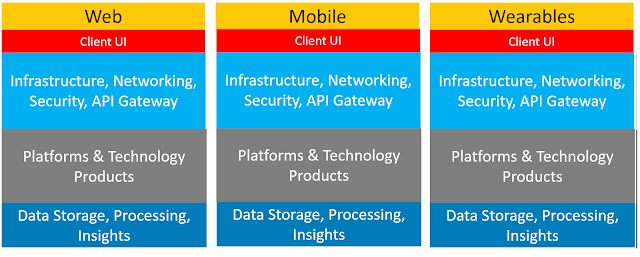Part 2 - Decomposing and decoupling to achieve composability

Having introduced "composable" in part 1 , we will now look at deconstructing and decoupling the typical layers of a digital solution to understand how composability can be achieved within them. Let's assume a typical application is composed of the following four layers: Client UI - typical client UI to serve channels like web, mobile, email, Social, AR/VR, Kiosk Infrastructure - this includes networking, security, hosting, routing and other typical functions Platforms/products - Off-the-self, plug-and-play, pay-as-you-go, bespoke products and tools that offer packaged business capabilities (PCBs is another Gartner term) or business applications as well as persistence Data storage - storage and persistence for data and analytics. Enterprise Data Lakes, Collections DB etc. Non-composable version of a digital solution will still include these layers but they are siloed. Decomposing the digital solution into these basic layers is in other terms is achieved through decoupling...